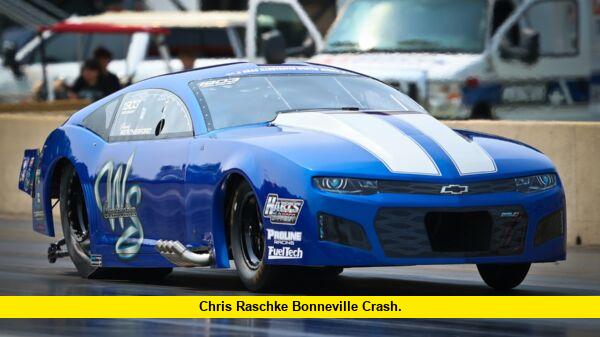The Chris Raschke Bonneville crash has shaken the land speed racing community after the veteran driver was killed during a speed record attempt at the famous salt flats on Sunday afternoon. Chris Raschke, 60, was attempting to break a speed record during Speed Week when he crashed at 3:30 p.m. at approximately the 2 1/2 mile mark of the Bonneville Salt Flats, according to the Southern California Timing Association.
The tragedy occurred while Raschke was piloting the Speed Demon streamliner, widely recognized as the world’s fastest piston-powered vehicle. The veteran driver lost his life in the 300-mph-plus crash, marking one of the most devastating incidents in recent Bonneville Speed Week history.
Table of Contents
Speed Demon’s Final Run
Raschke had aimed to push the vehicle, previously topping 470 mph, past 500 mph, enhancing the legacy of the late owner George Poteet. The 2025 event marked the debut of the third-generation Speed Demon chassis, specifically developed to honor Poteet’s memory and achieve unprecedented speeds.
Chris crashed the Speed Demon streamliner going somewhere around 300 miles per hour after losing control at about the 2.5 mile mark on the Long Course. The incident represents a heartbreaking end to what was supposed to be a milestone achievement for the Speed Demon Racing team.
Emergency Response and Investigation
Medical personnel attempted life-saving measures on Raschke, but he was later pronounced dead at the scene. Emergency responders provided immediate medical attention following the crash, but their efforts were ultimately unsuccessful.
The incident is under investigation, marking a tragic moment for the land speed racing community. The Southern California Timing Association has launched a comprehensive investigation into the circumstances surrounding the fatal crash.
Racing Community in Mourning
The loss of Chris Raschke represents more than just another racing fatality. The 60-year-old driver was a respected figure in land speed racing, known for his technical expertise and dedication to pushing automotive boundaries at Bonneville.
Raschke’s involvement with the Speed Demon project began several years ago, where he quickly established himself as a capable pilot for one of racing’s most ambitious vehicles. His experience and skill made him the natural choice to continue George Poteet’s legacy with the new Speed Demon chassis.
Speed Week Suspended
Following the tragic incident, racing activities at Bonneville Speed Week were suspended as the community grappled with the loss. The annual event, which attracts racers from around the world seeking to set new land speed records, has been temporarily halted while investigations continue.
The Speed Demon team had high hopes for 2025, with their third-generation chassis representing years of engineering advancement. The vehicle incorporated lessons learned from previous iterations while maintaining the fundamental design philosophy that made it the fastest piston-powered car in the world.
Safety Considerations
The Chris Raschke Bonneville crash highlights the inherent dangers associated with land speed racing. Despite extensive safety protocols and modern protective equipment, attempting to break the 500-mph barrier remains an extremely hazardous endeavor.
Land speed racing at Bonneville has claimed several lives over the decades, yet drivers continue to pursue these ultimate automotive achievements. The salt flats provide a unique environment where racers can safely attempt speeds impossible on traditional racetracks.
Legacy of Speed
Raschke’s death occurs during what many considered a pivotal moment for the Speed Demon program. The team had successfully transitioned from George Poteet’s leadership to Raschke’s piloting, maintaining continuity in their quest for automotive immortality.
The racing community now faces questions about the future of the Speed Demon project. Whether the team will continue their pursuit of the 500-mph milestone remains uncertain as they process this devastating loss.
The investigation into the crash will likely examine mechanical factors, track conditions, and other variables that may have contributed to the tragedy. Such analyses help improve safety protocols for future land speed attempts.
This heartbreaking incident serves as a reminder of the courage required to push automotive boundaries and the ultimate price some pay in pursuit of speed records. What are your thoughts on the risks versus rewards of land speed racing? Share your perspectives in the comments below.
